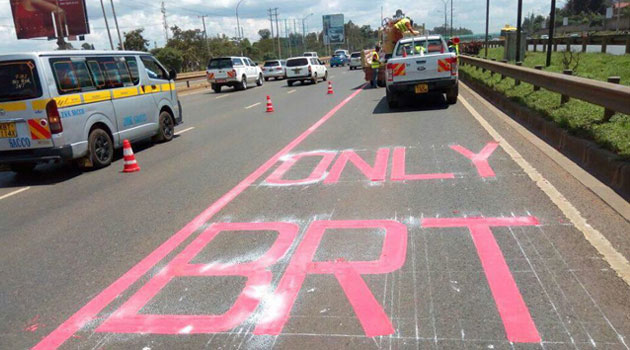The Kenya Private Sector Alliance (KEPSA) has recommended the immediate implementation of the Bus Rapid Transit (BRT) System in order to enhance private sector participation in the Big Four agenda.
The business environment in Nairobi County is crucial to the private sector in the implementation of the Big Four Agenda mainly because it contributes the biggest chunk of Kenya’s GDP.
These were some of the deliberations from the eighth Presidential Roundtable held in State House on May 10, 2018. The aim of the roundtable was to discuss the government’s agenda and how the private sector can be involved towards the achievement of the goals.
Therefore, to achieve the accelerated implementation of the BRT system, KEPSA will hold a round table meeting with the Nairobi Governor Mike Sonko on May 16, 2018.
In addition, KEPSA recommends the CS Transport, James Macharia and Governor Mike Sonko to collaborate in the construction of roads within Nairobi by sharing budgets starting from the 2018/2019 financial year. KEPSA also said the Nairobi BRT should be functional by December 12, 2018.
The Nairobi BRT System
According to the Nairobi Metropolitan Area Transport Authority (Namata), the proposed Nairobi BRT will adopt the Bogota bus rapid transit model, the largest transit system in the world.
Bogota’s TransMilenio transit system, which was opened in December 2000, is being used as a model by countries that want to improve their public transport networks.
Previously, the Nairobi BRT was to be based on the Dar es Salaam model but the thought was discarded based on the system’s delayed arrivals and departures and poor linkage between roads and commuter rail stations.
The Nairobi BRT transit system will be used to decongest the crazy traffic experienced on the Nairobi roads and improve overall public transportation in the county.
To achieve this goal, Namata has allocated special lanes for high-capacity buses along Mombasa Road, Thika Road, Jogoo Road, and Outer Ring Road.
However, Joe Nderitu, the founder and chairperson of the Public Transport Operators Union observes that a few issues need to be considered. He states, “My worry is that Nairobi city cannot be like Rio De Janeiro, Johannesburg, London, Lagos, Bogota or neighbouring Dar es Salaam but BRT standards should not be lowered to suit the politics of our city. Another issue is how will matatu service feeding into a BRT be improved?”
In light of KEPSA’s recommendations, the BRT system is urgent and crucial to improving public transportation in the county and decongesting the city. However, stakeholder engagement, creativity, and innovation need to be applied to ensure that the system is integrated seamlessly with the current matatu sector.




